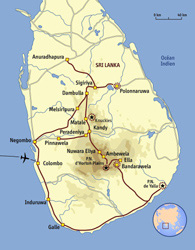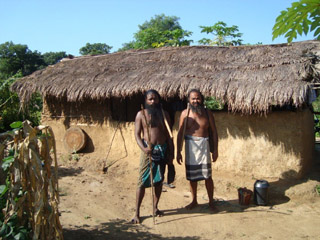 |
> Plus de cours & d'exercices d'anglais sur les mêmes thèmes : | Géographie | Pays [Autres thèmes] |
| > Tests similaires : - Nationalités - Géographie-Lexique - Noms et adjectifs de nationalité - Continents et océans - Foreign-foreigner-strange-stranger - Croissance de la population - Pays divers - Vocabulaire : la lecture et l'écriture | |
| > Double-cliquez sur n'importe quel terme pour obtenir une traduction... |
Sri Lanka - cours d'anglais
SRI LANKA
That is an account of my favourite sites admired on my trip to Sri Lanka (2018), after the first one in 1971.
The SINHALESE are the native inhabitants in Sri Lanka.
|
A few very brief Sri Lanka's historical landmarks are essential before telling and sharing my favourite sites with you.
RELIGIONS
Sri Lanka has a multiple ethnic population and multiple religious beliefs.
BUDDHISM: Was introduced in the second century by MAHINDA, SHOKA's son . 70 percent of the population follow this religion in most of the regions apart from the northern one.
HINDUHISM: The second religion. Most of the Indians are Tamil people.They came in the 2nd century and the nineteenth century from southern India to work on tea plantations. They are established in the North, in the East, the Central Highlands and in Colombo.
ISLAM: was transmitted by the Arabic merchants. Eight percent of the population practise islam.
CHRISTIANITY: The European colons introduced Christianity in the 16th century (Western coastal region).
BURGHERS; The descendants of the white colonists live in Colombo (they are in the minority).
COLONISATION-INDEPENDENCE-CIVIL WAR
The country was colonized by the PORTUGUESE from 1505 to 1656) (151 years),chased away by the DUTCH (1656-1796) (140 years), evicted by the BRITISH (1802-1948) (146 years).
The INDEPENDENcE was proclaimed in 1948.
The civil war between the Sinhalese and the Tamil lasted from 1959 to 2002 (43 years).
MY FAVOURITE SITES
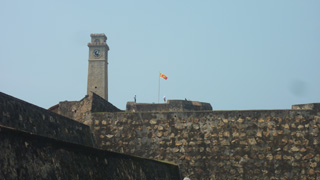 | - My first enthusiastic feeling was for GALLE, the town with two faces: the new modern town and the old one, with its fort and ramparts built 300 years ago by the DUTCH. It withstood cannons for centuries and the Tsunami (2004) (38,000 killed). |
My first real great emotion was for the BUDURUWAGALA's archaeological site located in ELLA
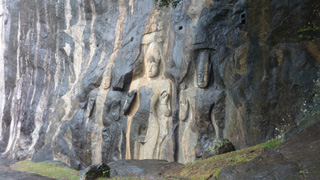 |
| On the left, three Buddha's divinities and two disciples. |
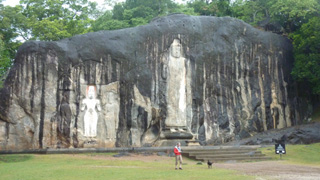 |
A sixteen-meter Buddha draws itself up to his full height in the sculptured cliff. |
 |
| On the right, according to certain reliable sources: A Tibetan Bodhisattva and Vishnu (Hinduism divinity). |
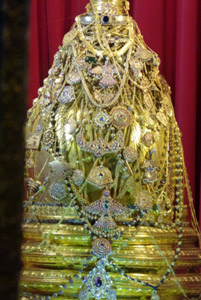
My second great emotion was for this HINDU temple called: Buddha's TOOTH TEMPLE located in Kandy palace.
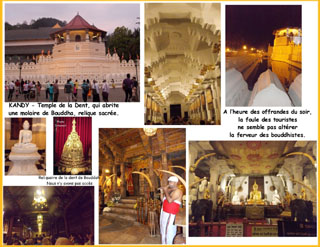 | A lot of people come in close order to pay a tribute to Buddha carrying their offerings, in front of a Small DAGOBA = A dome-shaped SHRINE : SHRINE: Holy place, of pilgrimage containing Buddha's relics.
|
I felt a great emotion for the Buddhist MIHINTALE's site
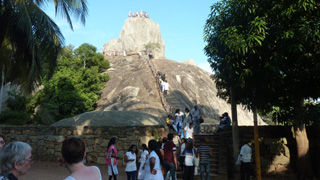 | It attracts a crowd of Pilgrims who don't hesitate to climb a steep spiral slippery staircase above an empty space. However they help one another to reach the summit successfully. On the narrow platform, the sight is breathtaking. |
Then, the first "Must" :SIGIRAYA's site built by KASSAPA (477/495), a very restless sovereign who built his palace at the top of a gigantic narrow rock face, in order to defend himself against all his enemies including his own family.
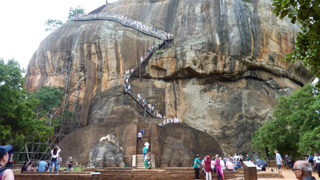
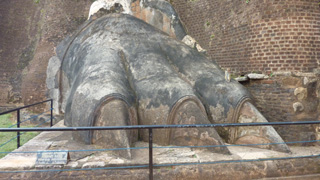 | 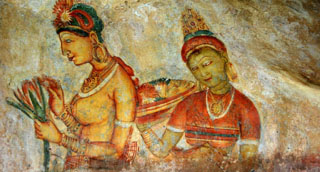 |
The entrance is located between the lion's paws and his sharpened claws. | Our climbing is rewarded by the presence of magnificent rock paintings named : Les DEMOISELLES.
|
Then, the amazing: GAL VIHARA's site located in POLONNASUWA
The delicacy and the serenity which emanate from this masterpiece has never been equalled up to this day.
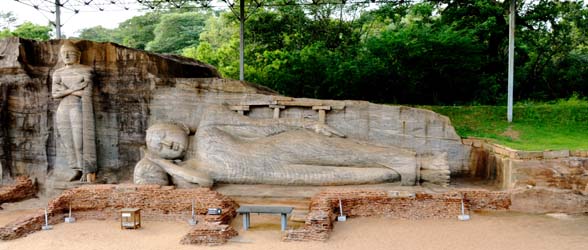 |
A fourteen- meter RECUMBENT Buddha sculpted in a granite cliff. RECUMBENT: An art term meaning: Buddha lying on his side and dead because : |
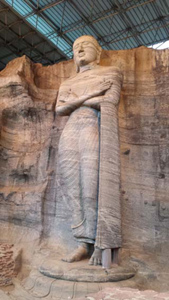 |
and another standing up Buddha (his arms folded on his chest). |
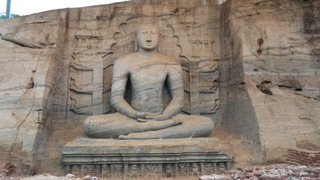 |
Buddh |
Another site that left me stunned: DAMBULLA (which is a part of the cultural triangle).
This site consists in 5 Buddhist-sculpted caves in the rock, memorable by the quantity of Buddhas in different postures and rock paintings.
 | 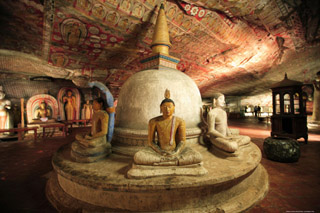 |
| Finally we can't disregard MEDIRIGIYA's site in ANURADHAPURA |
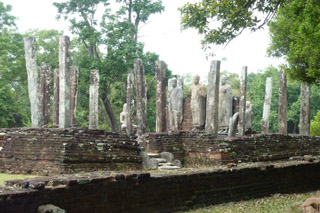 |
| Pillars and Buddhas |
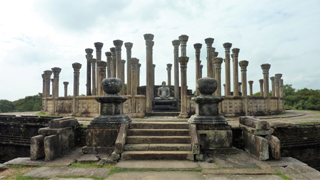 |
| Circular temple |
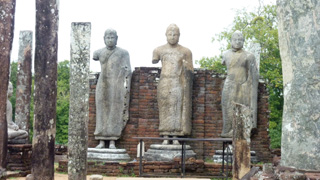 |
| Three Buddhas |
Thank you for answering the questions.
Exercice d'anglais "Sri Lanka - cours d'anglais" créé par taiji43 avec le générateur de tests - créez votre propre test ! [Plus de cours et d'exercices de taiji43]
Voir les statistiques de réussite de ce test d'anglais
Fin de l'exercice d'anglais "Sri Lanka - cours d'anglais"
Un exercice d'anglais gratuit pour apprendre l'anglais.
Tous les exercices | Plus de cours et d'exercices d'anglais sur les mêmes thèmes : | Géographie | Pays

